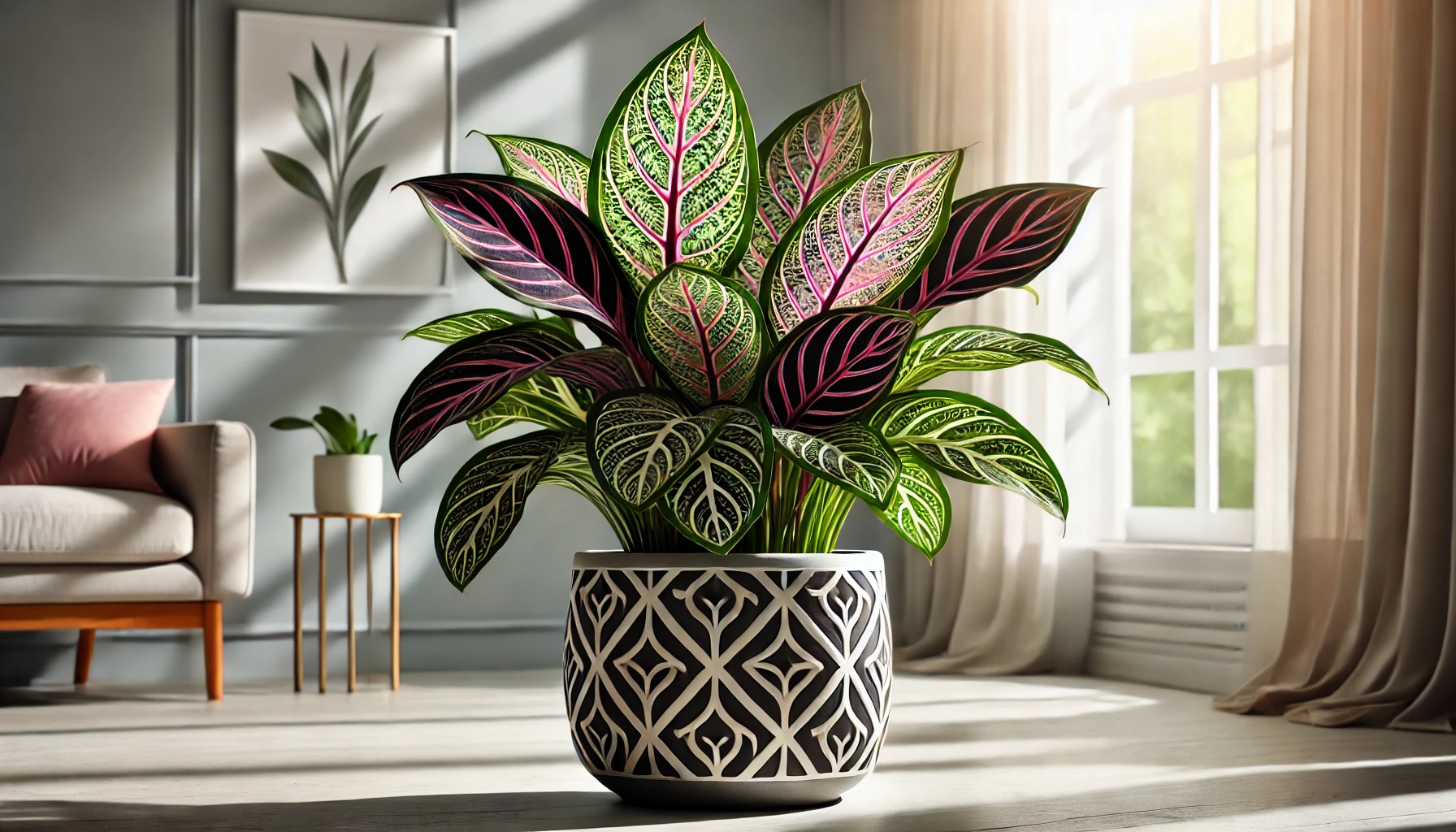
The Calathea plant is well-known for its striking foliage, which often features intricate patterns and vibrant colors. With leaves that can display a variety of hues from deep green to pink, purple, and white, Calatheas are a favorite among plant enthusiasts for their decorative appeal. Typically, Calatheas can grow up to 2-3 feet tall and wide, making them a perfect addition to any indoor space.
A Rich History and Ideal Growing Conditions
Native to the tropical regions of South America, particularly Brazil, Calatheas have long been admired for their beauty and are often used in decorative gardens and homes. They thrive in warm, humid environments that replicate their natural habitat. Calatheas grow best in bright, indirect light and can also tolerate lower light conditions, making them versatile for various indoor settings.
Calathea and Pets: Important Information
One of the best things about Calatheas is that they are non-toxic to pets. You can enjoy their stunning foliage without worrying about the safety of your cats or dogs, making them an excellent choice for pet owners.
Best Practices for Caring for Your Calathea
Caring for a Calathea can be a bit more demanding than some other houseplants, but with the right knowledge and attention, they can thrive and become a beautiful focal point in your home.
Watering and Humidity
Calatheas prefer consistently moist soil but do not like to sit in water. Water the plant thoroughly when the top inch of soil feels dry, and ensure that excess water drains out of the pot to prevent root rot. In general, watering once a week is a good starting point, but you may need to adjust based on your specific environment. Calatheas thrive in high humidity levels. If your home is dry, consider using a humidifier or misting the leaves regularly to increase humidity around the plant.
Soil, Light, and Temperature
A well-draining, peat-based potting mix is essential for Calatheas. They grow best in bright, indirect light but can tolerate lower light conditions. Avoid direct sunlight, which can scorch the leaves. Calatheas prefer temperatures between 65°F and 80°F and should be kept away from cold drafts and sudden temperature changes.
Common Problems and Remedies
Even with the best care, Calatheas can encounter some common issues. Yellowing leaves can be a sign of overwatering or poor drainage. To remedy this, ensure the soil is well-draining and adjust your watering schedule accordingly. Brown leaf tips can be caused by dry air or inconsistent watering. Increasing humidity around the plant and maintaining a regular watering schedule can help prevent this issue.
Calatheas can also be affected by pests such as spider mites, aphids, and mealybugs. To combat these pests, use a water and mild soap solution or neem oil spray. Regularly inspecting your plant and wiping down the leaves can help prevent pest infestations.
Propagation and Benefits
Propagating Calatheas is relatively easy and can be done through division. When repotting, gently separate the plant into smaller sections, each with its roots, and plant them in individual pots. This method is not only easy but also a great way to expand your collection or share plants with friends.
Calatheas are not only beautiful but also beneficial to your indoor environment. They are known for their air-purifying qualities, helping to remove toxins from the air and improve overall indoor air quality.
Final Thoughts
Calatheas are one of the most beautiful and dramatic houseplants you can find. Their stunning foliage and unique patterns make them a favorite among plant enthusiasts. While they do require some attention to thrive, the rewards are well worth the effort. With the right care, your Calathea can become a stunning focal point in your home. So why not add a Calathea to your collection and enjoy the beauty and benefits it brings?
Stay connected with the world of plants! Subscribe to Phylofy for expert gardening tips, DIY projects, and eco-friendly inspiration. Join our community and nurture your love for nature. Don’t miss exclusive content and updates. Subscribe now!



